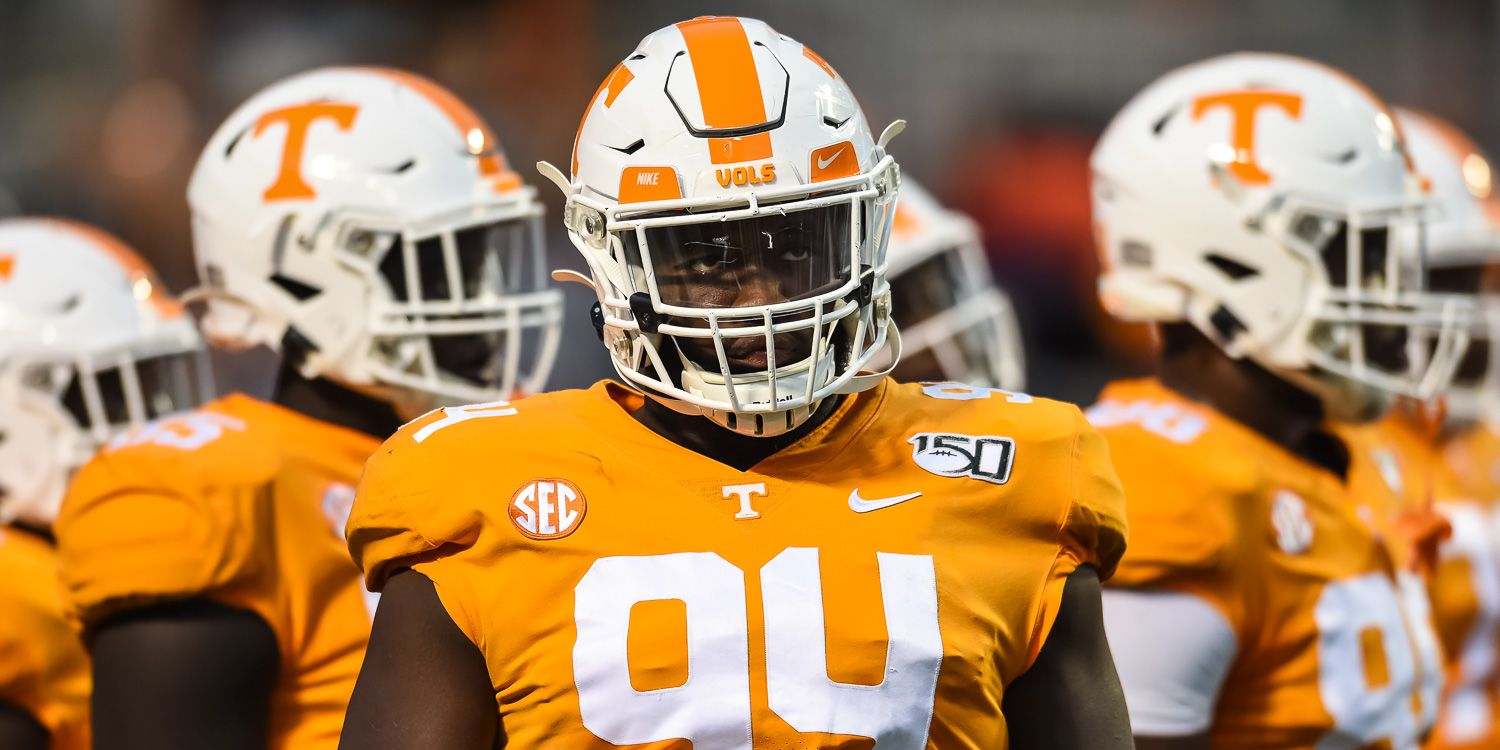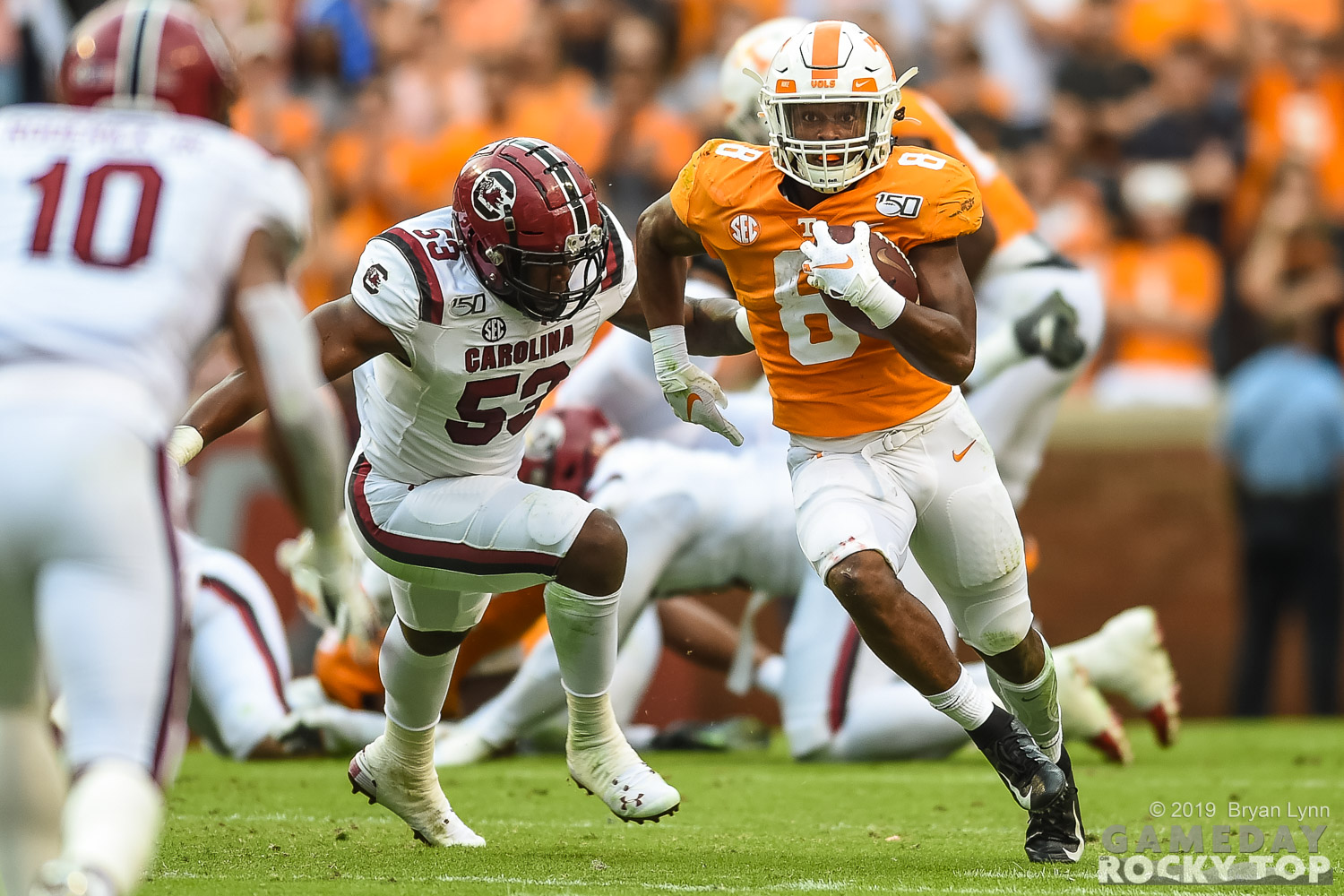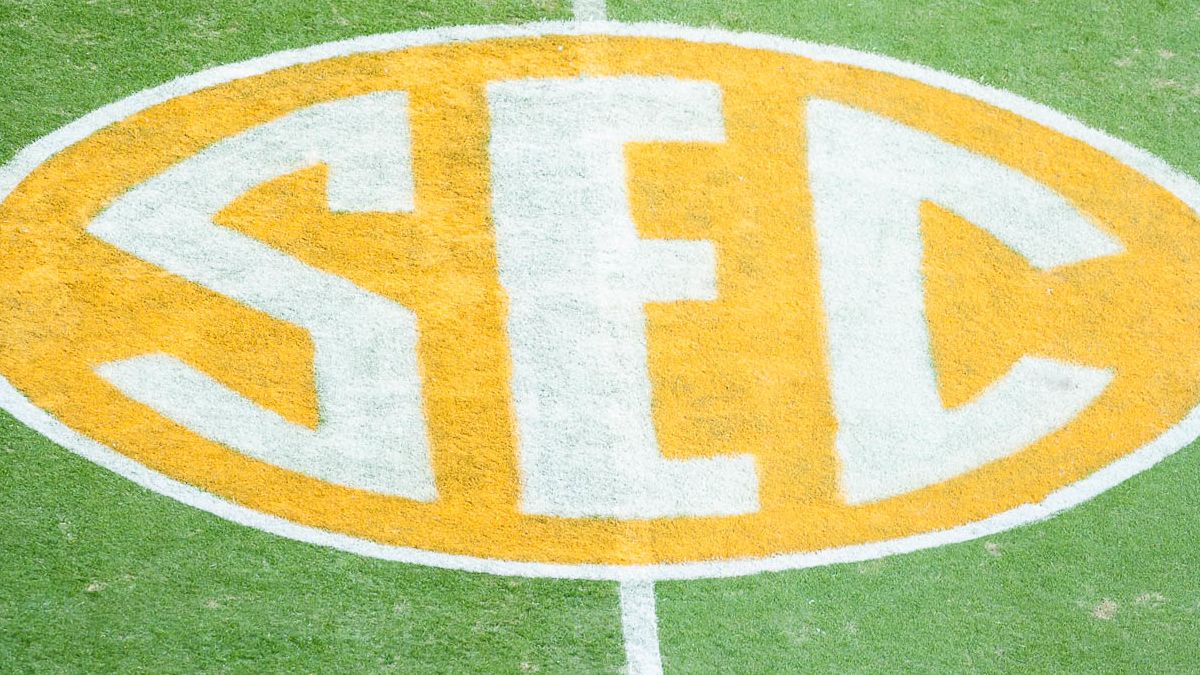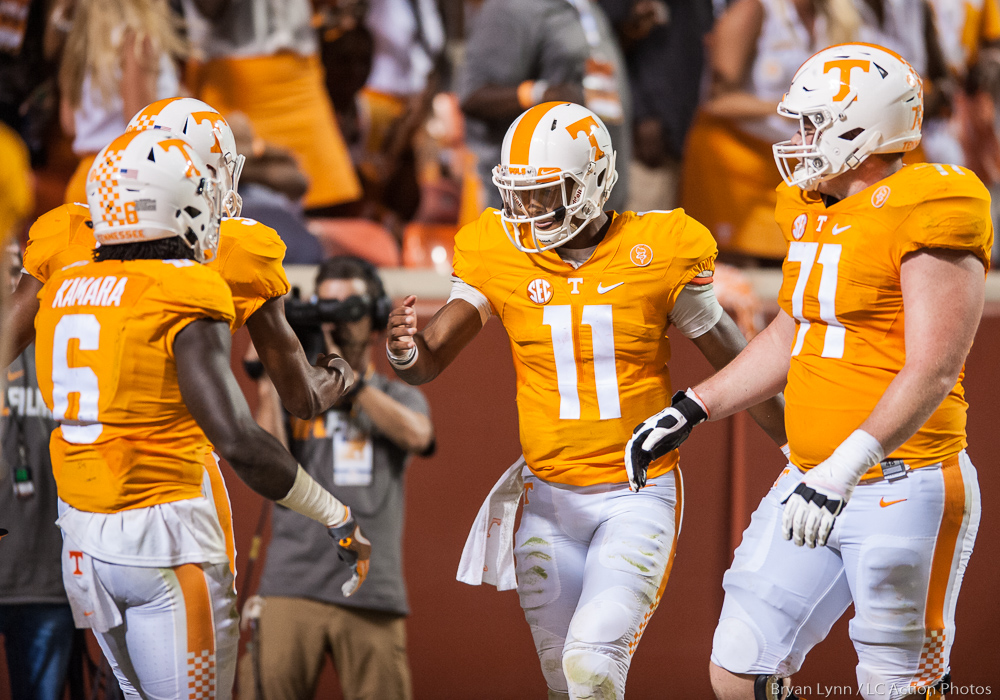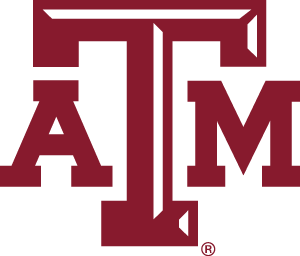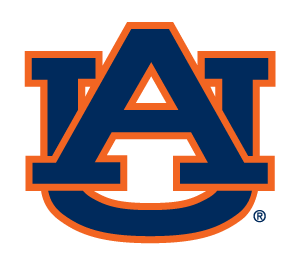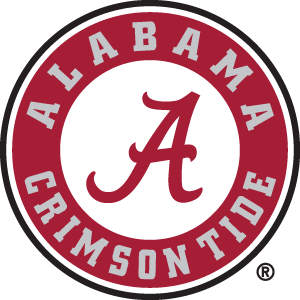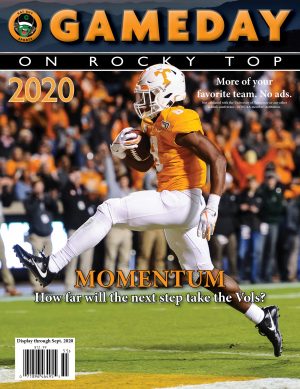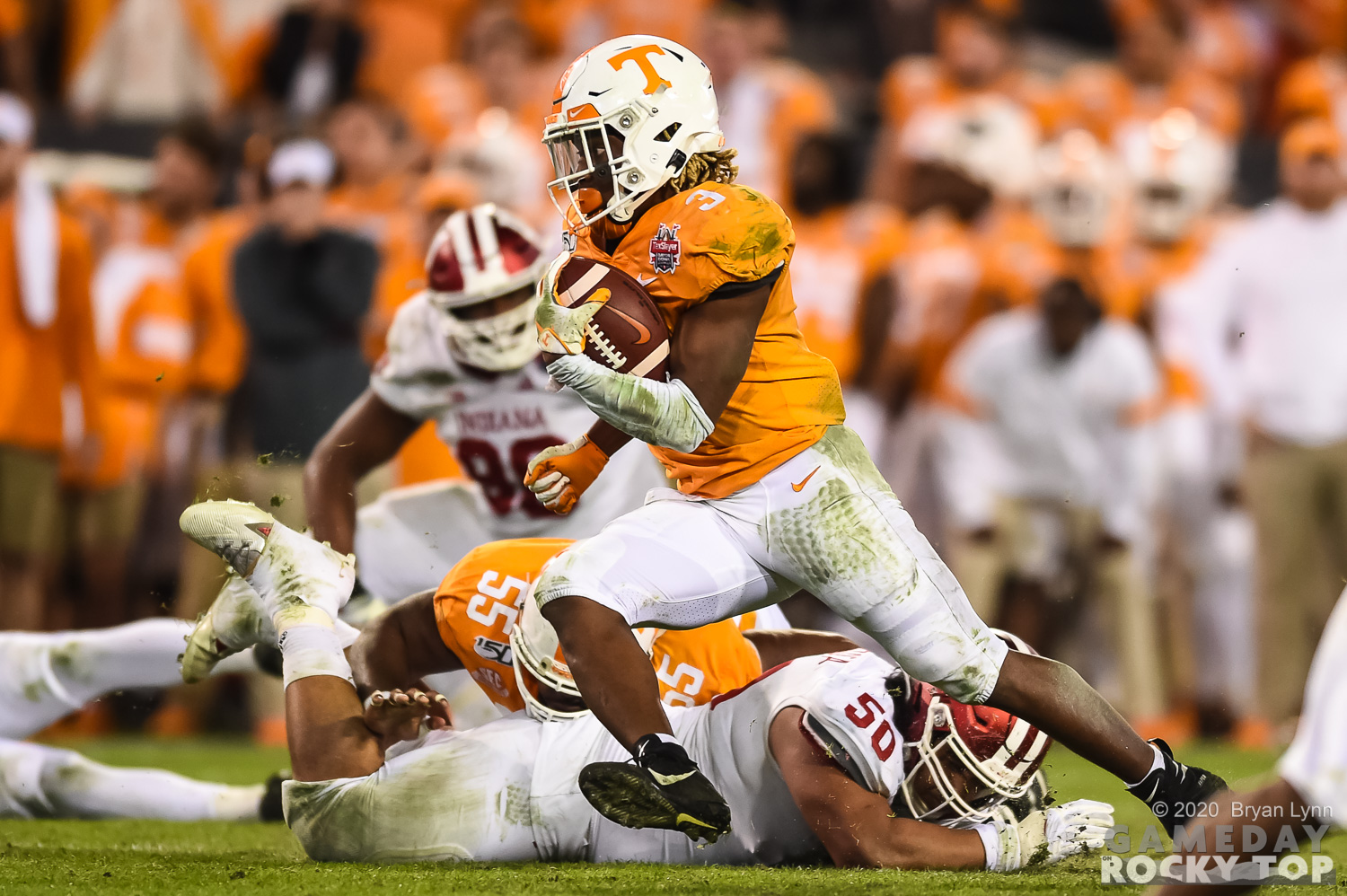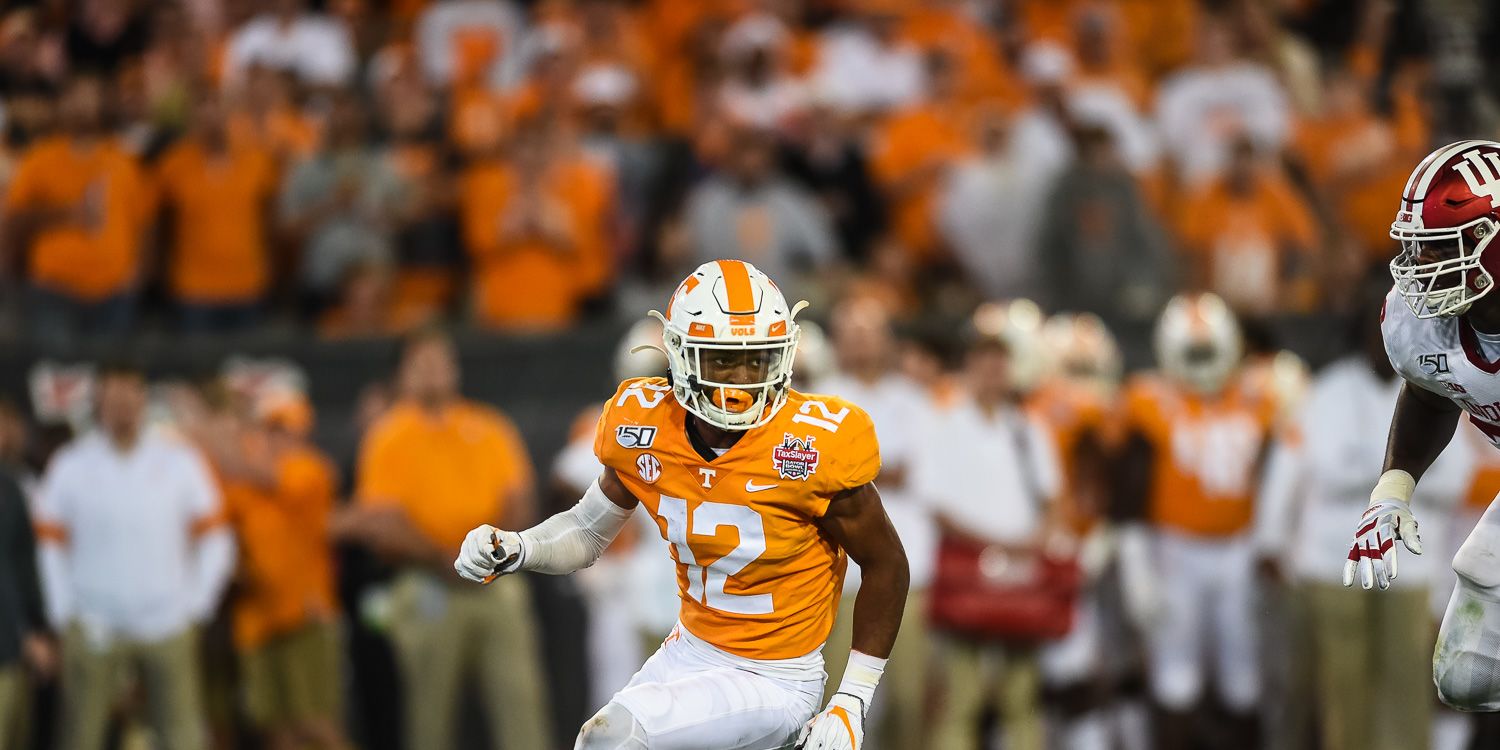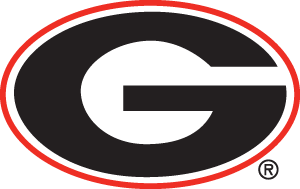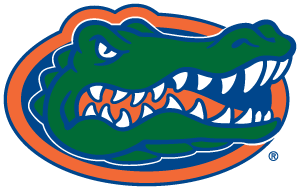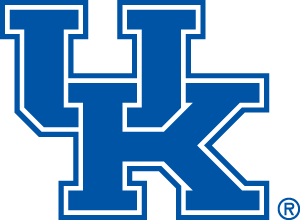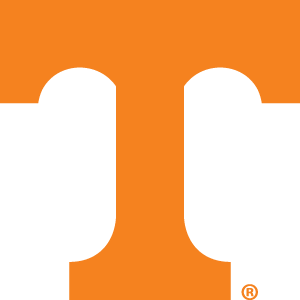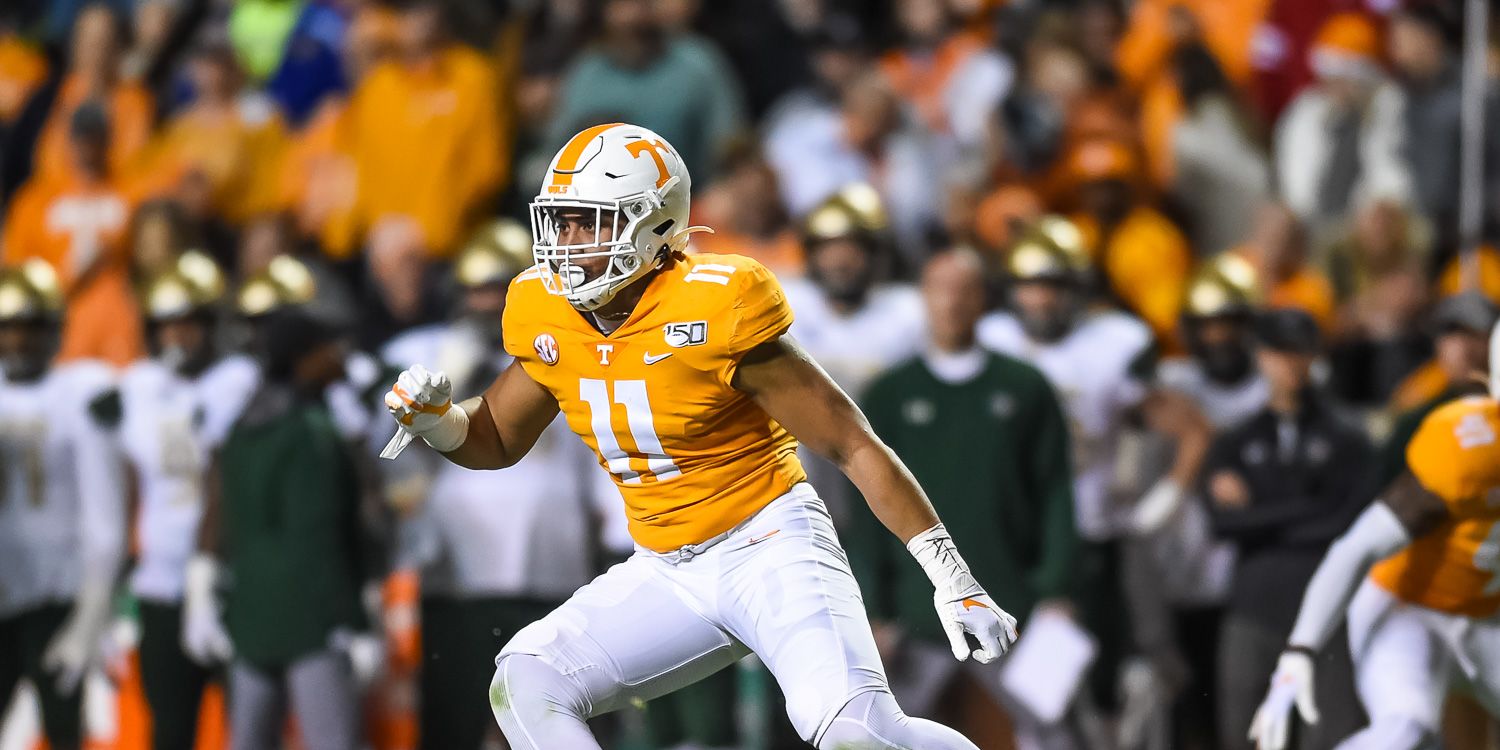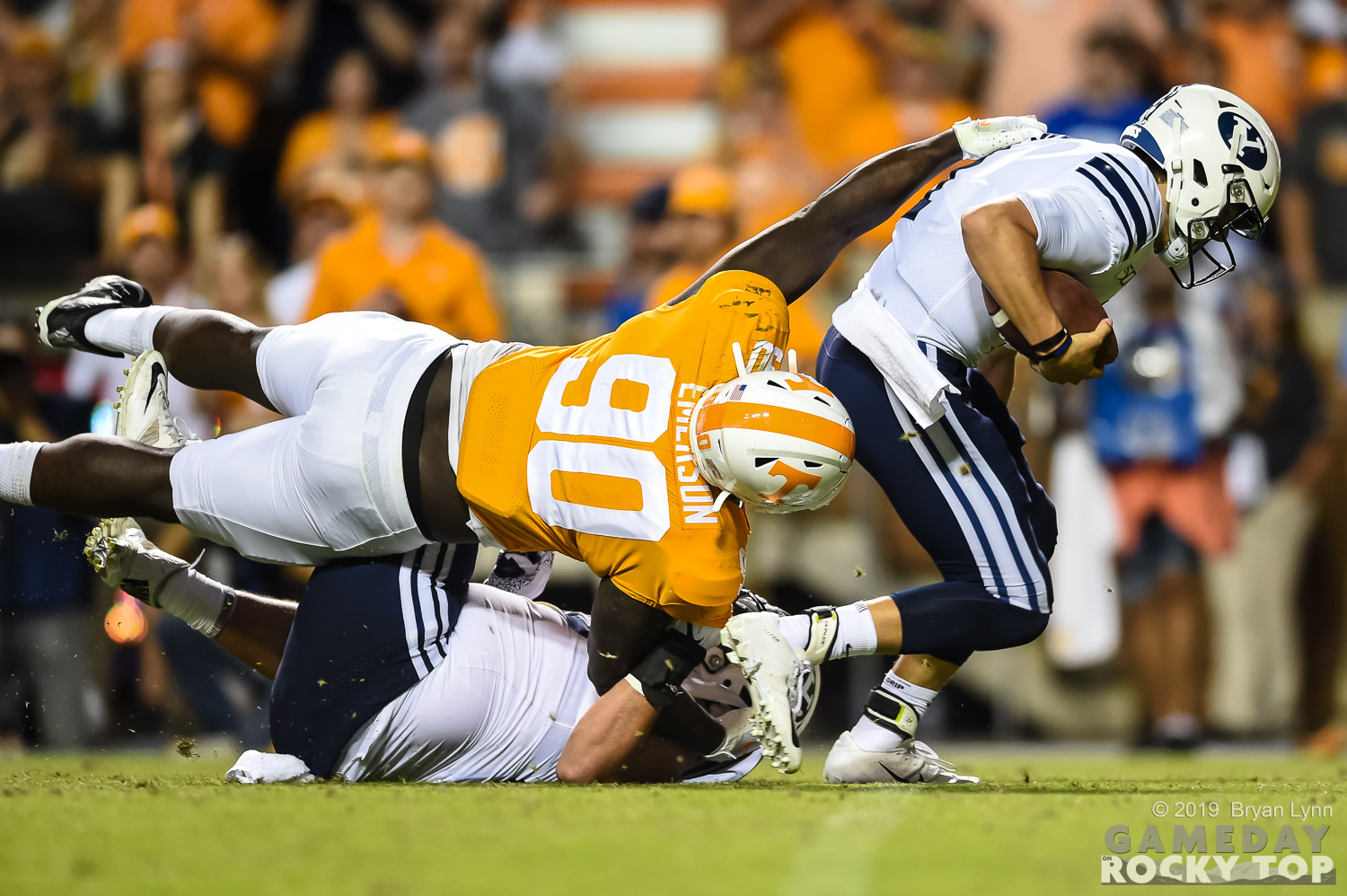Thursday was a day of bad news for Tennessee football, with word coming out about TE Austin Pope’s back injury that could result in him missing a lot of the 2020 season* and DL Emmitt Gooden’s dismissal from the team for an arrest on assault charges. This is on top of the recent dismissal/transfer of RB Tim Jordan, meaning the Vols have lost three projected contributors (and two starters) in a matter of weeks. Obviously bad news for any program, but certainly for Tennessee as it stands just on the line of having the kind of quality depth needed to compete for a championship.
So what can Coach Jeremy Pruitt do to shore up the roster here in the middle of July, less than 2 months from the start of the 2020 season? Maybe not much, but here’s an idea: With the suspension of Junior College football for the fall season, could the Vols push for a handful of JUCOs to graduate this summer via a sprint of online courses and enroll for the fall? Perhaps it’s not possible, but the following JUCO players (and one surprise high school player) could definitely help the Vols this coming season and by skipping the 2020 JUCO season would simply give themselves and extra season of eligibility in Knoxville. Each of the players discussed are scheduled to be December graduates already, so perhaps the idea isn’t that far fetched…
RB Tiyon Evans: This one is beyond obvious. Evans is a star in the making and a guy who Tennessee coaches have been planning on plugging next to Eric Gray in 2021 to form one of the best 1-2 punches in the SEC. But with the loss of Tim Jordan Tennessee is down to only 2 experienced RBs on the roster in Gray and senior Ty Chandler, backed up by 2-2 true freshmen. If Evans could get himself to Knoxville this fall, that would simply accelerate Vol coaches’ plans and immediately take UT’s RB corps to another level. With the expected strength of the OL and question marks in the passing game (exacerbated by losing the prospective #1 TE in Pope) bolstering the running game would be huge for Tennessee’s offense.
DL Jamond Gordon: A one-time Auburn commitment as a prep star out of Mississippi, Gordon signed with Ole Miss before heading to East Mississippi C.C., where last year he collected had 6.5 TFLs and 2 sacks. At 6’4, 280 pounds, he’s got very good size and quickness and likely would compete for a spot at the top of the DL rotation. Gordon actually seemed to try and commit to Tennessee back in the spring but Vol coaches weren’t ready to take the commitment. Would that change now that Gooden is no longer on the team? We’ve consistently advocated for taking at least one JUCO DL as well as potentially redshirting a senior DL this season given the massive losses for Coach Jimmy Brumbaugh’s corps heading into 2021. At this point the latter option seems off the table for now, but adding Gordon might open that door again while also giving him a chance to be in the program for an additional year before playing a bigger role in 2021.
DBs Khyree Jackson and De’jahn Warren: While DB isn’t a position of immediate need in 2020, a) the Vols could still certainly use some more talent and flexibility in the secondary this season, b) it is very much so in 2021, and c) Jackson and Warren, 247 Sports’ top two JUCO DBs in the country, are too good not to do whatever it takes to get them on your roster. Jackson recently added Tennessee back to his top schools list after the Vols made a major push for him, while Warren actually already has an official visit set – one of four he’s got scheduled. Both are bigtime recruitments that TE Coach Joe Osovet has the Vols firmly in thanks to his ties to Maryland (where both are originally from) as well as his and DL Coach Brumbaugh’s JUCO coaching experience (Brumbaugh once coached at EMCC, where Jackson is teammates with the aforementioned Gordon).
TE Quentin Moore: While Moore is committed to homestate Washington, Tennessee – thanks to, you guessed it, Osovet – was a major factor in his decision before he ultimate settled on the Huskies. But what if Tennessee could sell him on coming in this season and being the starting TE – would that get him to reconsider? The Vols made a play for Central Michigan grad transfer Tony Poljan just this past week before he quickly committed to Virginia, so the staff obviously sees the need there and maybe more importantly this shows that there is room on the roster under the 85/25 rules to add more players.
TE Hudson Wolfe: “A senior-to-be can’t be ready to play in the SEC!” some might say. And maybe they’d be right. But Wolfe isn’t your regular senior-to-be, is he? At 6’6 and 240+ pounds, Wolfe already is bigger than most of the TEs on Tennessee’s roster. And besides, CB Tony Grimes, whose high school season in Virginia has officially been cancelled, is enrolling at UNC so Wolfe wouldn’t be the only one taking this route. Now, the TSSAA hasn’t yet made a final decision on whether there will be high school football in the state of Tennessee this fall, but it’s obviously far from certain. If there is no season (and maybe even if there is) would Wolfe consider enrolling a year early (instead of just a semester) and likely walking into a major role immediately? That would certainly be a boon for Coach O’s TE room. One that, without Pope, will already have to have multiple contributors who like Wolfe are inexperienced.
Pruitt and his staff will obviously continue to scour the Transfer Portal to see if they can add someone to the 2020 roster to bolster some position. And they should. But thinking outside the box a bit might allow them to add one or more players they already covet but get a bonus season from them.
*Entire conversation stipulates that there will be at least some sort of college football season in 2020
